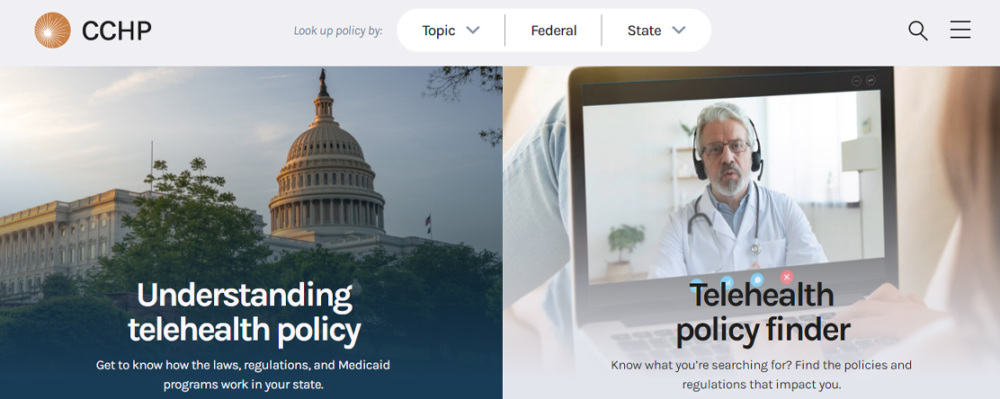
Utilizing Telehealth to Access Medication Assisted Therapy to Treat Opioid Use Disorder in California’s Medicaid Program
-
Focus Areas
Data, Technology & Innovation -
Issues
Technology & Telehealth -
Programs
Center for Connected Health Policy -
Strategic Initiatives
Opioids

PHI’s Center for Connected Health Policy (CCHP) has conducted in-depth research into the intricacies and barriers around utilizing telehealth to access medication assisted therapy (MAT) for purposes of treating opioid use disorder (OUD) in California’s Medicaid Program (Medi-Cal). CCHP’s report, funded by the California Health Care Foundation, details its findings and makes recommendations to help facilitate greater access to MAT services through telehealth in California.
Opioid overdose is classified by the US Department of Health and Human Services (HHS) as a nationwide epidemic and a serious public health issue. MAT combines behavioral therapy and medication to treat opioid use disorder (OUD). Three medications are approved for opioid use disorder: methadone, buprenorphine, and naltrexone. The Substance Abuse and Mental Health Services Administration (SAMHSA) and the American Society of Addiction Medicine (ASAM) both endorse MAT as the gold standard of treatment and recommend that all three medications be widely available, as there is no one treatment that meets all needs. However, access to MAT remains limited, with only 10% of those needing treatment able to access it. Telehealth offers a potential solution to address these treatment access issues by providing MAT services through technology.
Unfortunately, significant policy and logistical barriers to telehealth’s implementation in MAT programs persist on both the federal and state levels. On the federal side, the use of telehealth to prescribe a controlled substance (i.e. methadone and buprenorphine) in lieu of an in-person exam is only allowed in very limited situations. These restrictions serve to limit the tools for providers to provide MAT services and make it difficult for rural and underserved areas to provide MAT services. Additionally, California’s law is ambiguous when it comes to whether a provider is able to prescribe through telehealth. The law requires an “appropriate prior examination” prior to prescribing, without clarifying whether live video suffices.
In Medi-Cal, difficulty in utilizing telehealth in MAT programs is complicated by the varying coverage policies between five different programs under which a Medi-Cal enrollee can receive behavioral health services as well as the medication used in MAT. Each of the programs has different requirements and each excludes different services, different providers, and different places of service, creating challenges for Medi-Cal beneficiaries trying to access services and for providers aiming to serve them. Receiving these services via telehealth adds another layer of complexity, as there are also limitations on what services can be delivered via technology.
Some of the recommendations for improving the policy environment for the use of telehealth in MAT programs include:
- Clarify California telehealth law to define “appropriate examination” as including live video, with the patient in their home or the community, including remote prescribing.
- Ensure consistent Medi-Cal policies across all programs, modernizing regulations to meet current telehealth models and access demands.
- Address geographic barriers by creating a state-wide reciprocity solution, to allow patients moving to new counties access to MAT services without delay.
For more details on the recommendations and to learn more about navigating the Medi-Cal program to access MAT services through telehealth in California, see the full report.
Work With Us
You change the world. We do the rest. Explore fiscal sponsorship at PHI.
Support Us
Together, we can accelerate our response to public health’s most critical issues.
Find Employment
Begin your career at the Public Health Institute.


